Photos: Ariel Sharon | 1928-2014
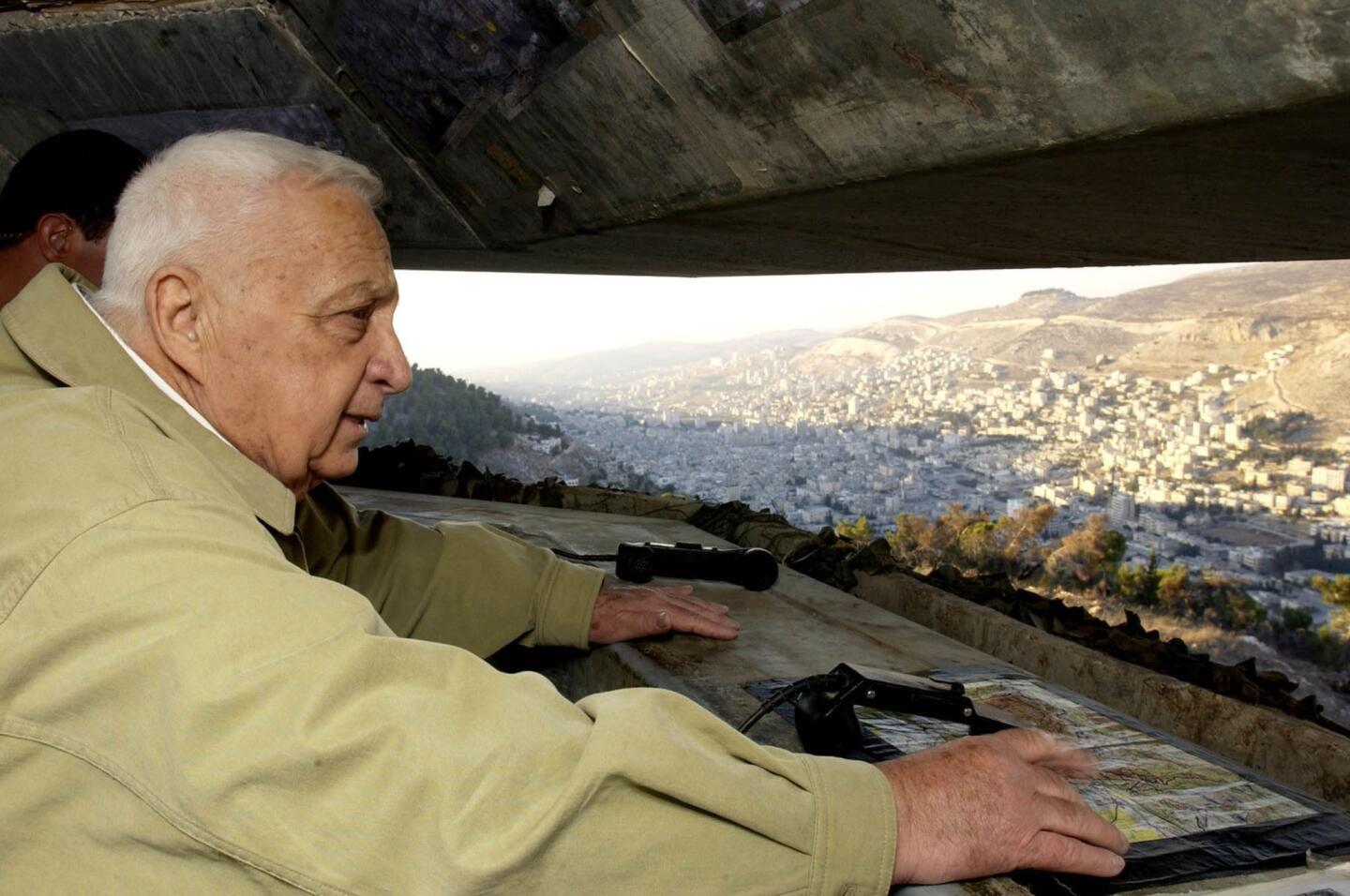
Prime Minister Sharon looks at the West Bank town of Nablus during a November 2002 visit to the Tel Fares observation point that overlooks the Palestinian town. In the spring of that year, Sharon responded to a relentless series of suicide bombings in Israeli cities with Israel’s most sweeping military offensive since the 1967 war, sending the army into all the major population centers of the West Bank. (Avi Ohayon / Associated Press)
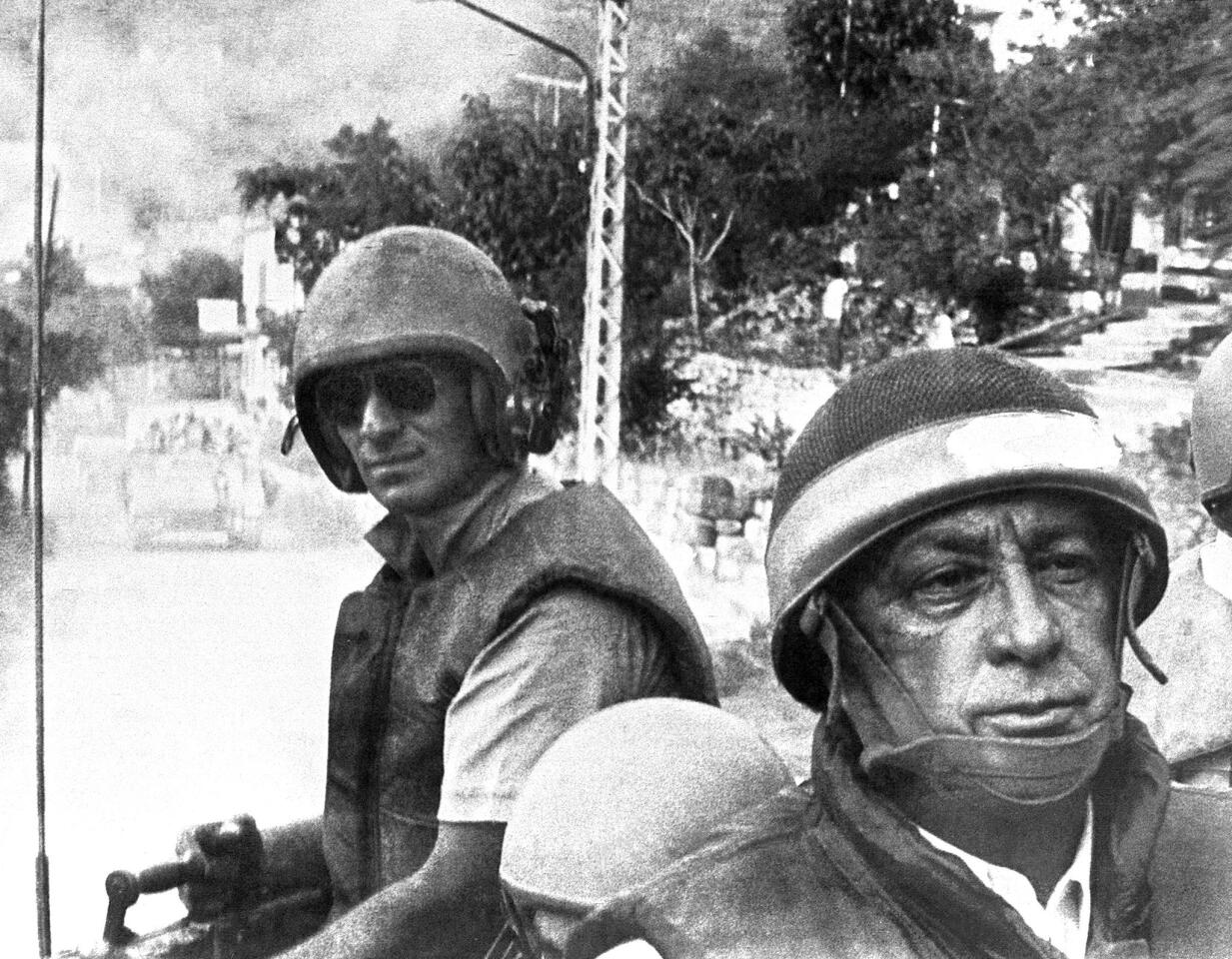
Ariel Sharon, right, as Israeli defense minister, rides with troops in June 1982 en route to East Beirut. Sharon had received Cabinet approval to thrust 25 miles into Lebanon, for a strike that was supposed to last two days, to thwart Palestinian rocket attacks on Israel. Instead, he instructed the army to drive all the way to Beirut, where it laid siege to Yasser Arafat and his forces for two months. The invasion drew international condemnation for the high number of civilian casualties. (AFP/Getty Images)
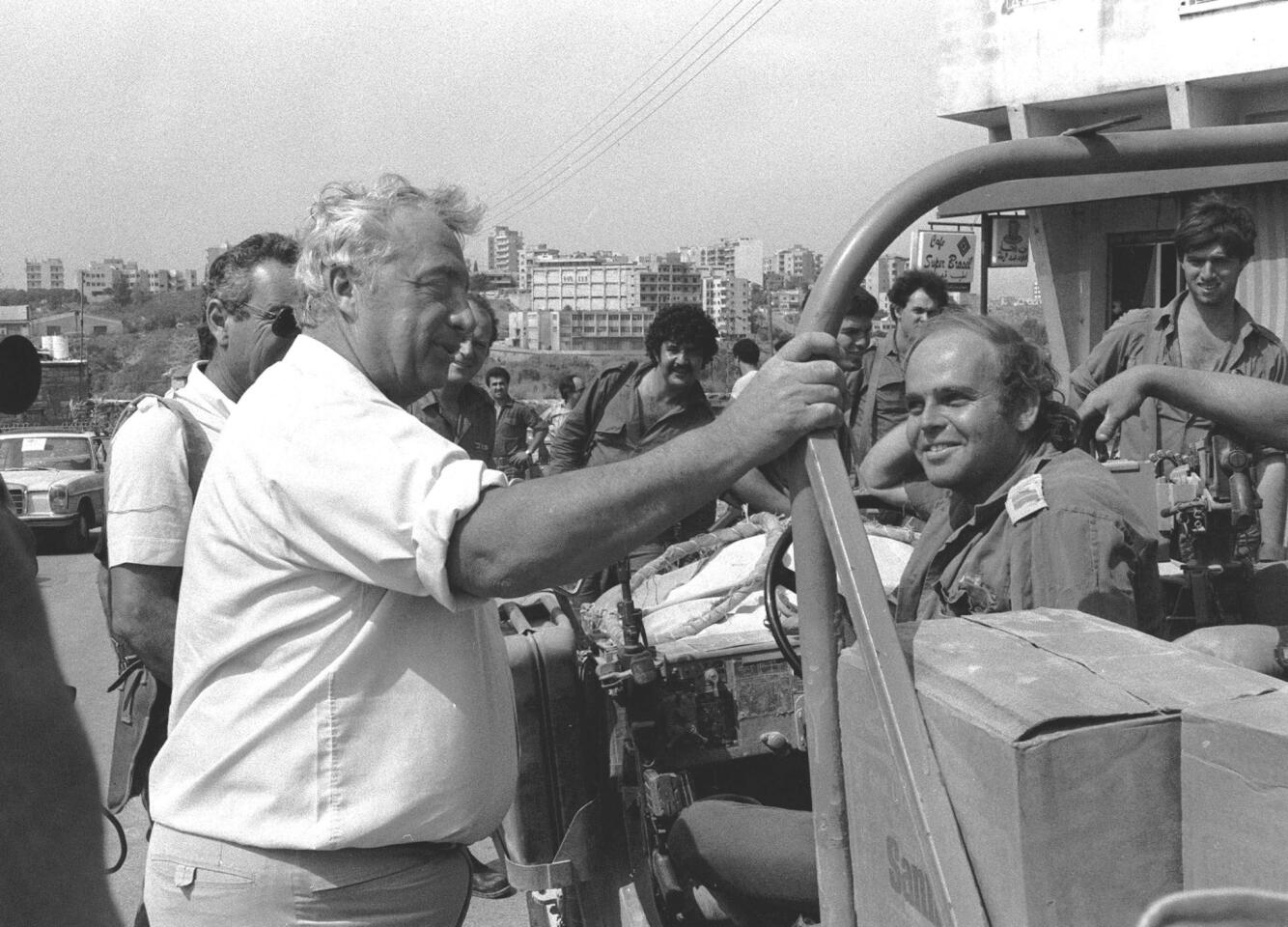
Sharon talks with Israeli troops during a visit to East Beirut in July 1982. (Ari Saris / Associated Press)
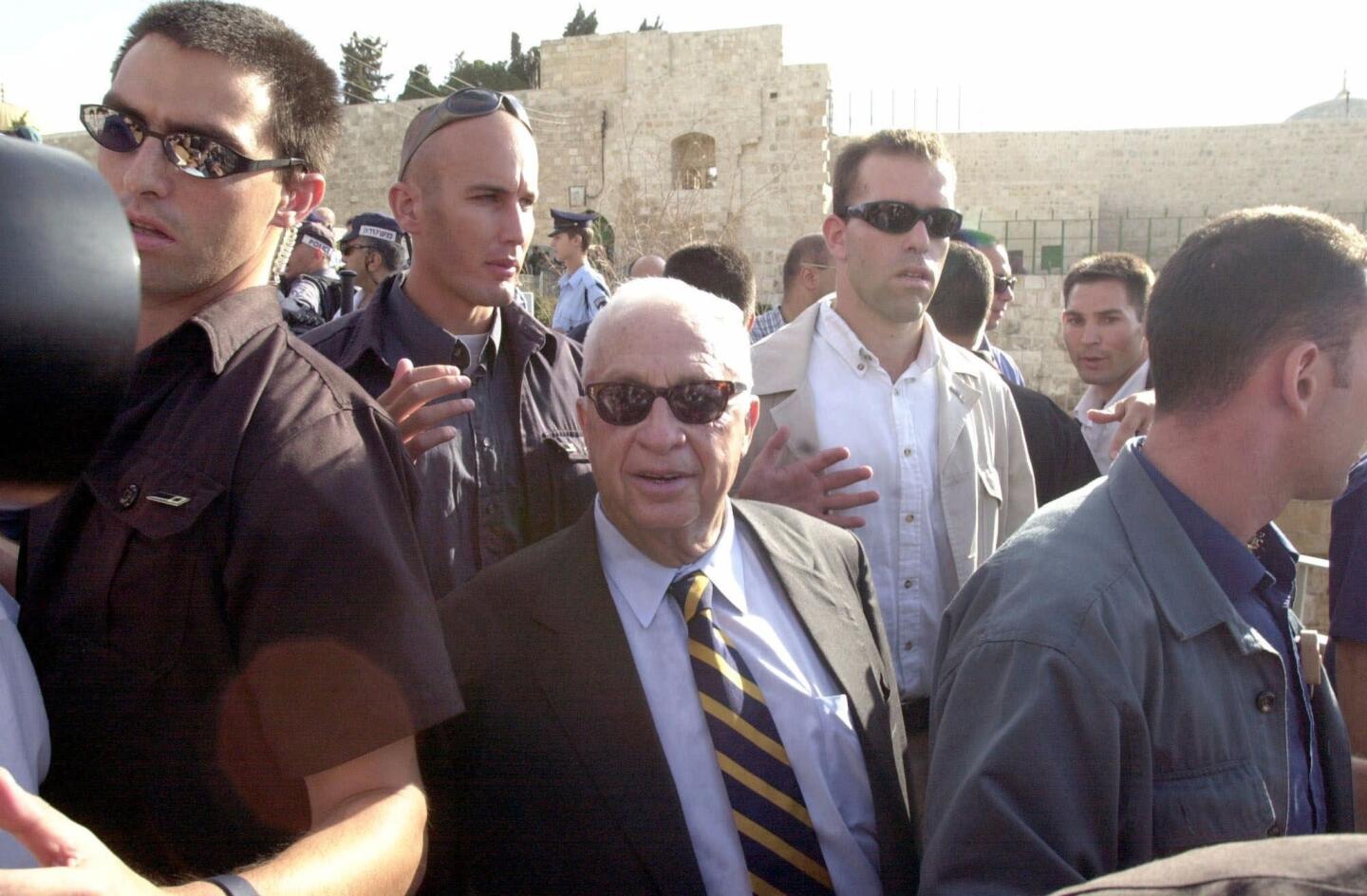
Sharon leaves the Temple Mount compound -- known as the Noble Sanctuary to Muslims -- in Jerusalem’s Old City on Sept. 28, 2000. His high-profile visit to the holy site sparked Palestinian riots that eventually mushroomed into an armed conflict that, over the next five years, would claim more than 4,000 Israeli and Palestinian lives. (Eyal Warshavsky / Associated Press)
Advertisement
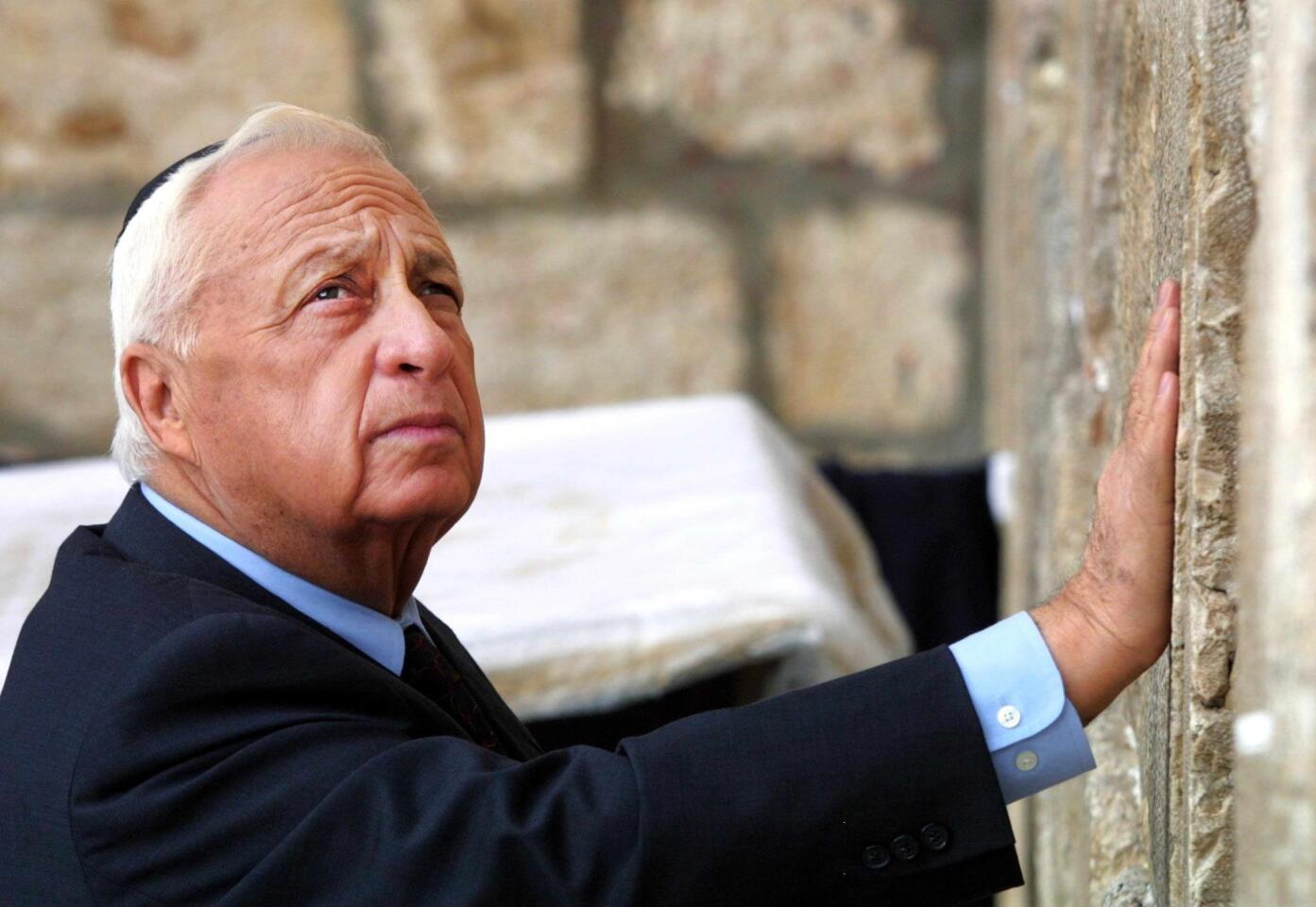
Israeli Prime Minister-elect Ariel Sharon places his hand on the Western Wall, Judaism’s holiest site, in the Old City of Jerusalem in February 2001. It was Sharon’s first public appearance the day after his landslide victory over incumbent Ehud Barak. (Thomas Coex / AFP/Getty Images)
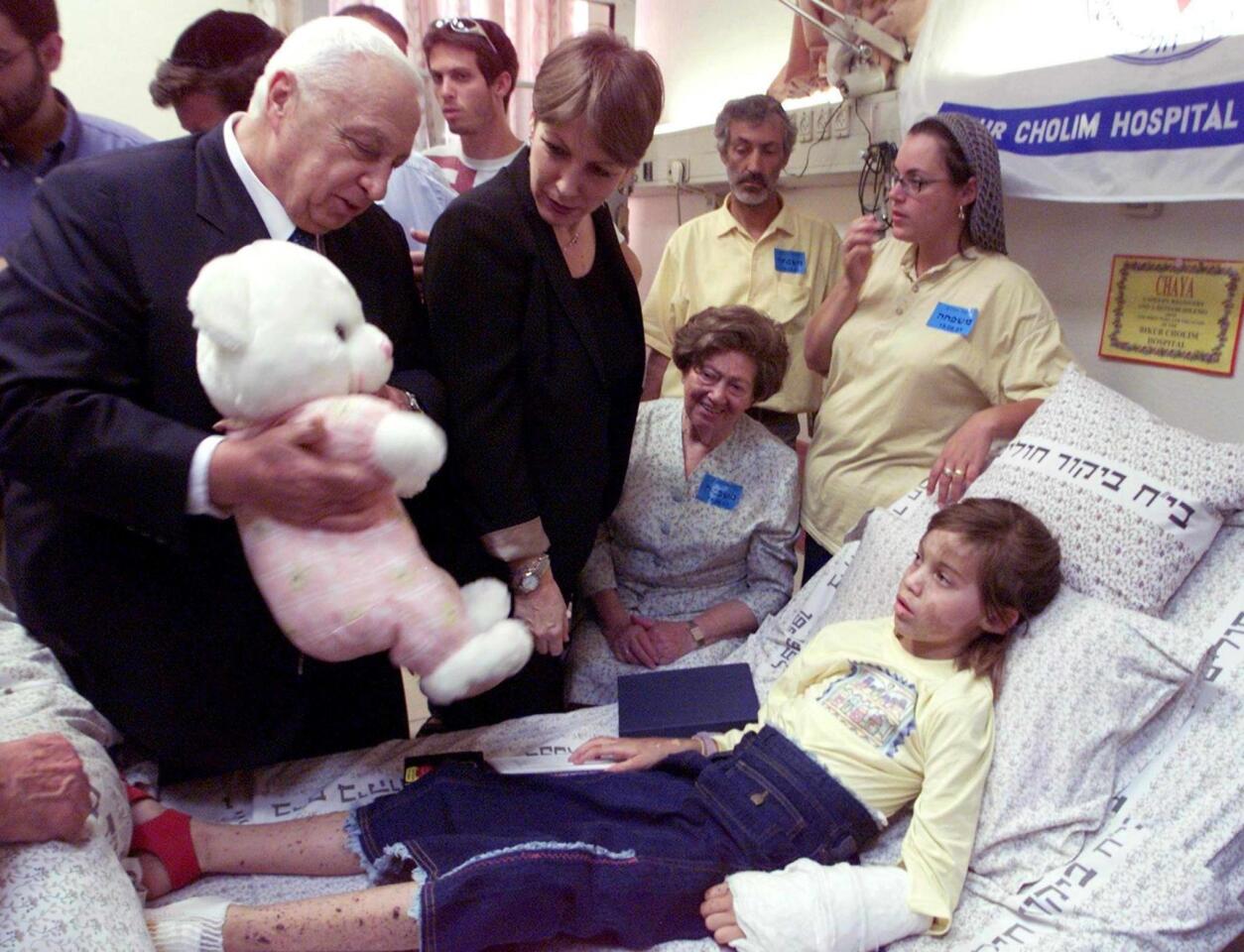
Sharon and Education Minister Limor Livnat present a stuffed toy to Haya Schijveschuurder at a Jerusalem hospital in August 2001. Haya was injured and five family members were killed in a Palestinian suicide bombing at a pizzeria. (Mir Alias / AFP/Getty Images)
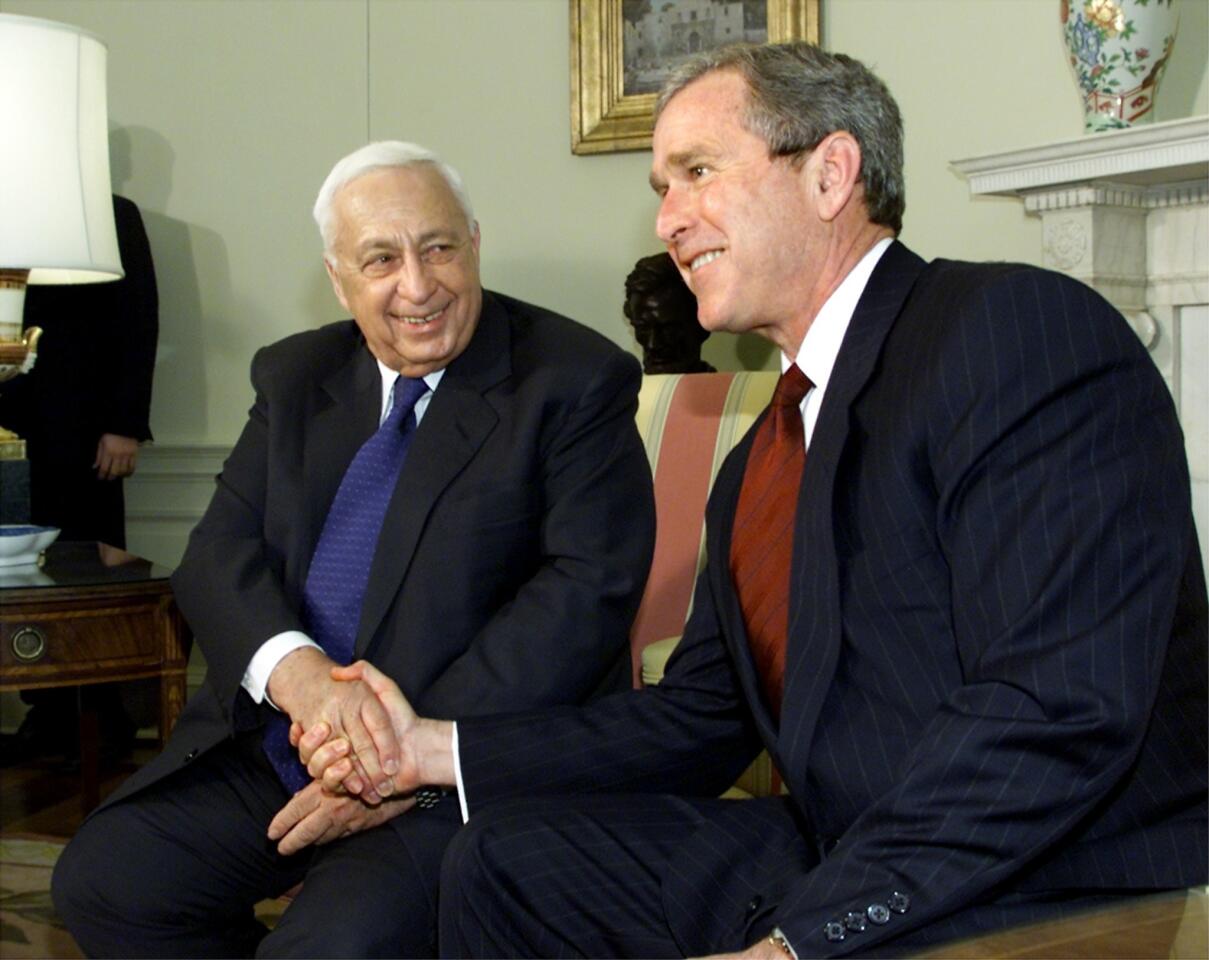
President George W. Bush and Israeli Prime Minister Ariel Sharon meet in the White House in December 2001. Sharon’s election campaign that year focused almost exclusively on the need to get tough. (Mike Theiler / Getty Images)
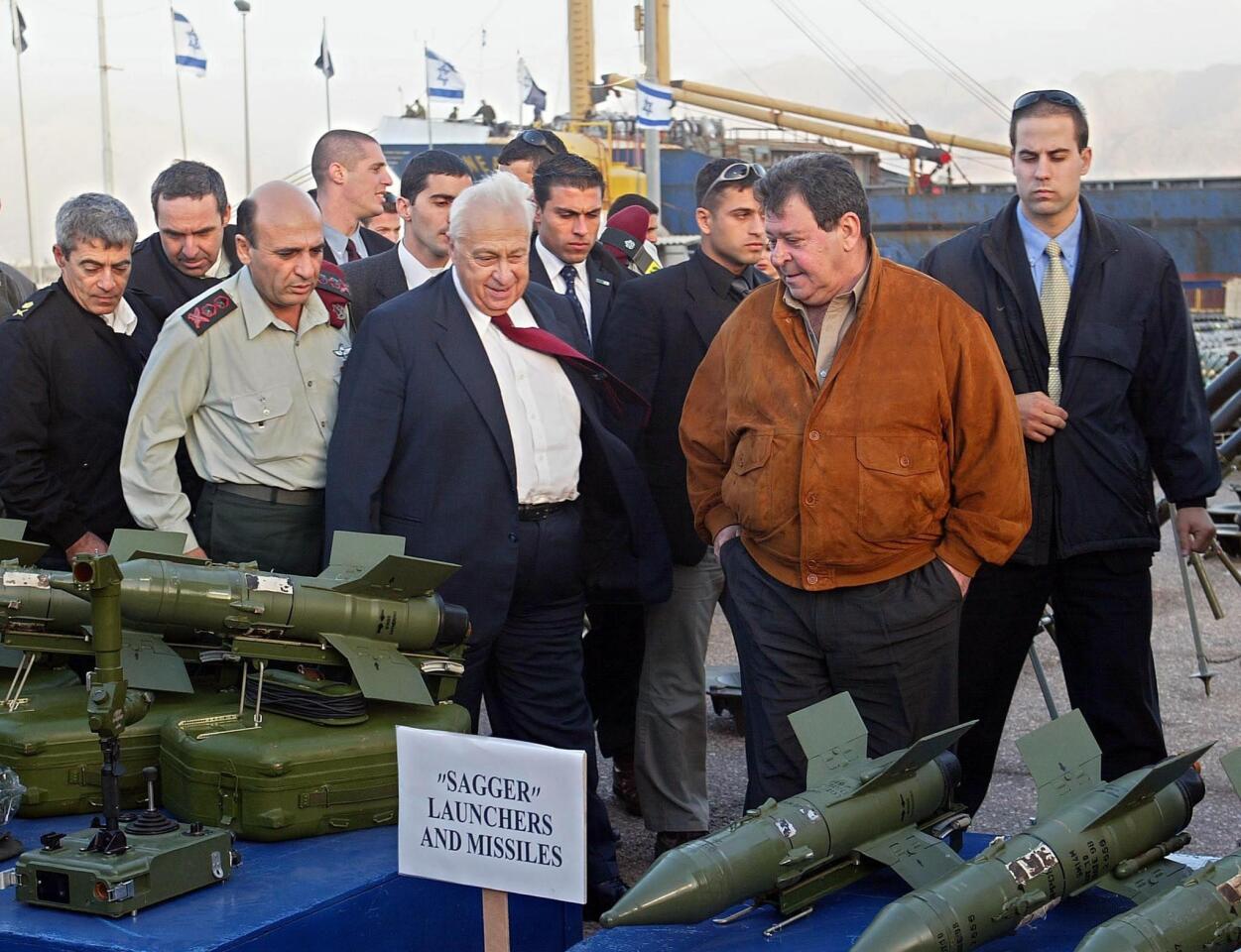
Israel’s military chief, Lt. Gen. Shaul Mofaz, left in grey shirt, Prime Minister Ariel Sharon, center, and Defense Minister Benjamin Ben-Eliezer look at Russian-made antitank missiles seized on a cargo ship and displayed in the Israeli Red Sea port of Eilat in January 2002. An Israeli official said the weapons were supplied by Iran to the Palestinian Authority. (Sven Nackstrand / Associated Press)
Advertisement
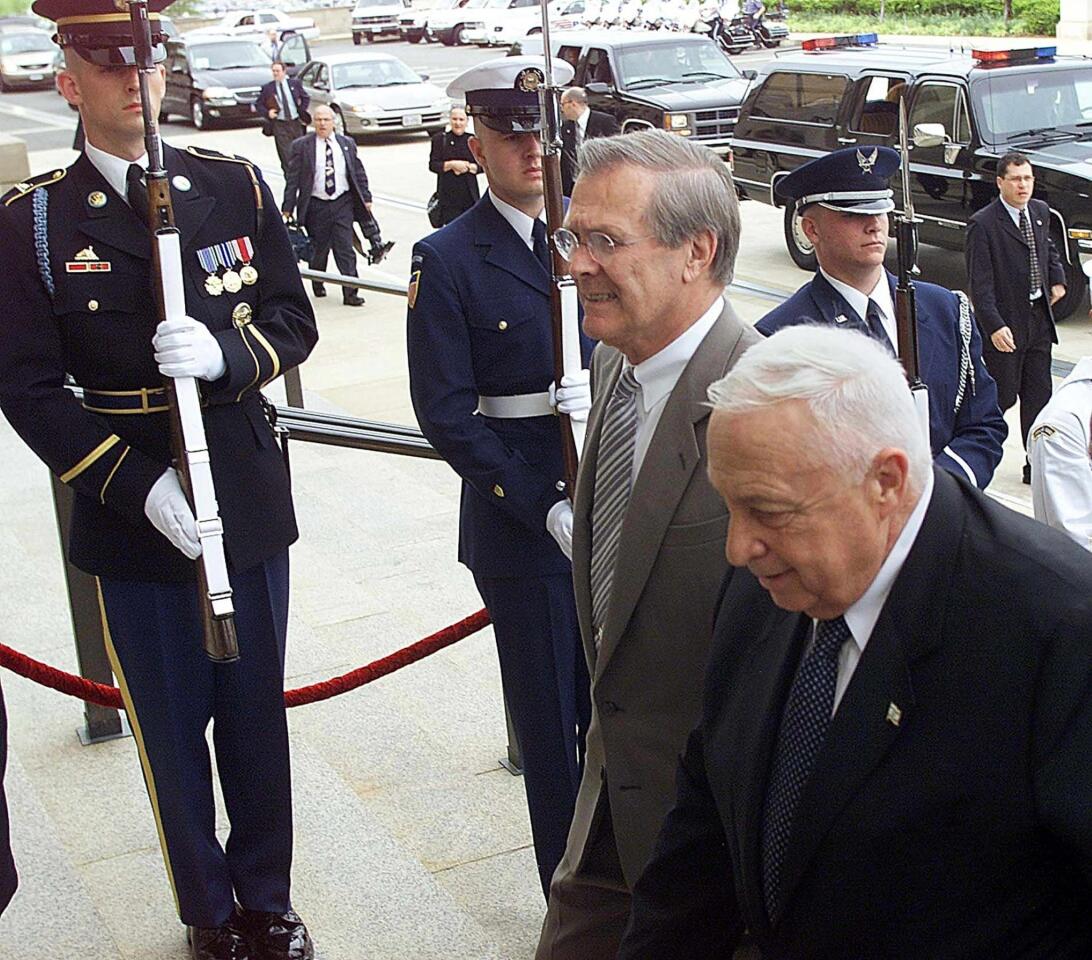
U.S. Defense Secretary Donald Rumsfeld walks with Sharon during an honor cordon at the Pentagon in Washington in May 2002. (Luke Frazza / AFP/Getty Images)
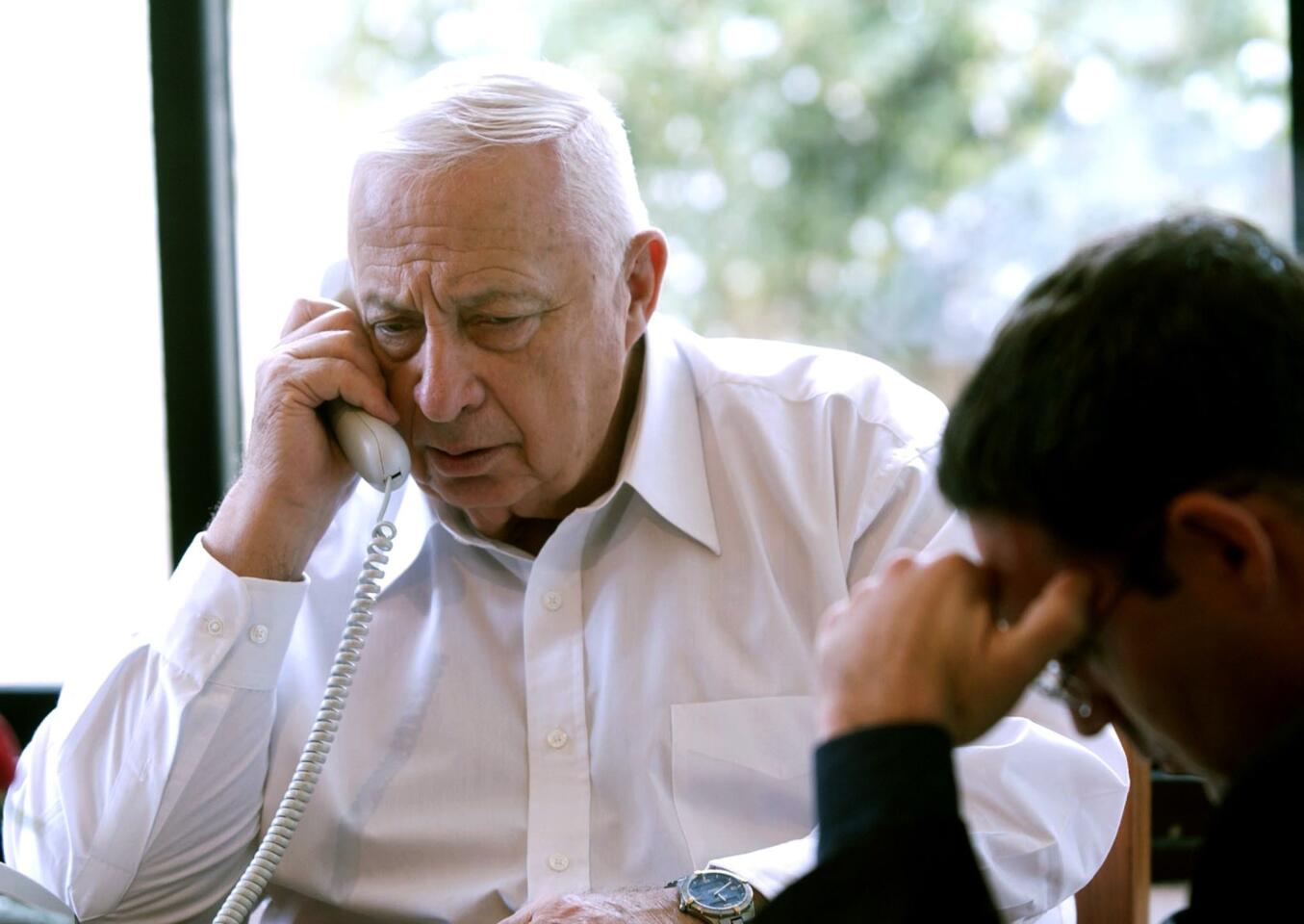
The prime minister, at his ranch in southern Israel, receives an update on attacks launched on Israeli tourists in Kenya in November 2002. (Avi Ohayon / Associated Press)
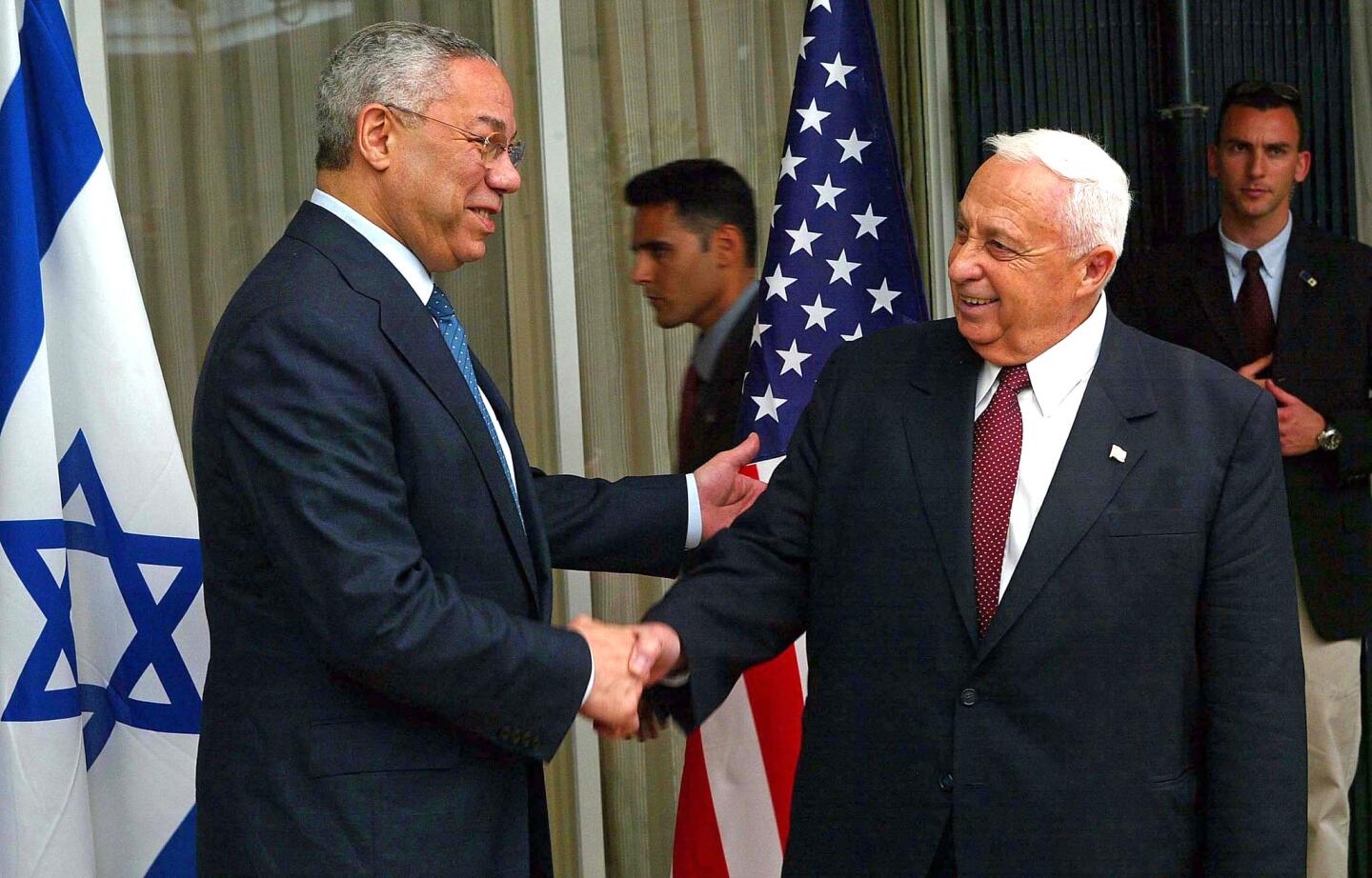
U.S. Secretary of State Colin Powell shakes hands with Sharon in May 2003 at the start of their meeting at Sharon’s official residence in Jerusalem. (David Silverman / Getty Images)
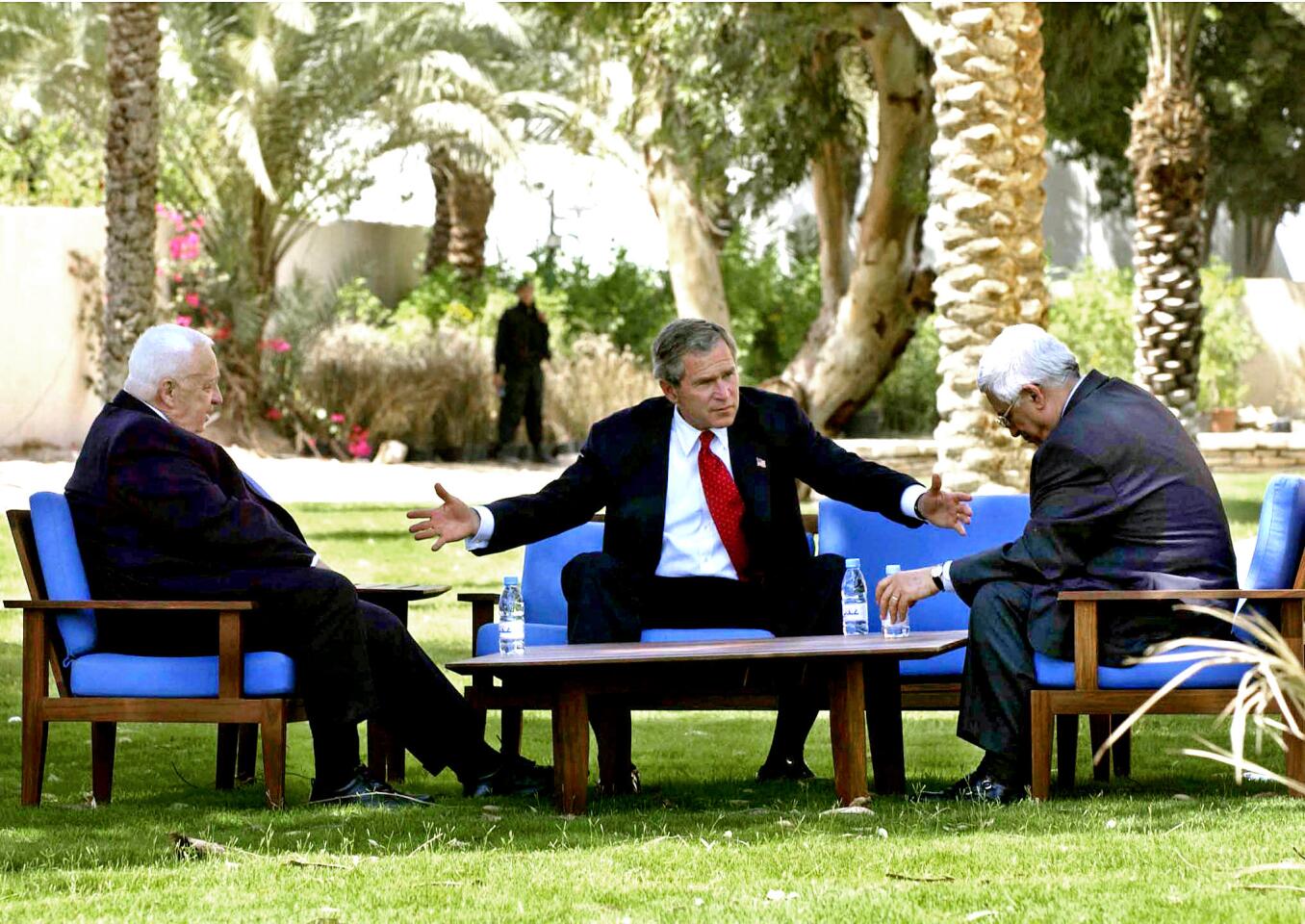
President George W. Bush, Israeli Prime Minister Ariel Sharon, left, and Palestinian Prime Minister Mahmoud Abbas hold talks in June 2003 in the Jordanian Red Sea resort of Aqaba. (Avi Ohayon / AFP/Getty Images)
Advertisement
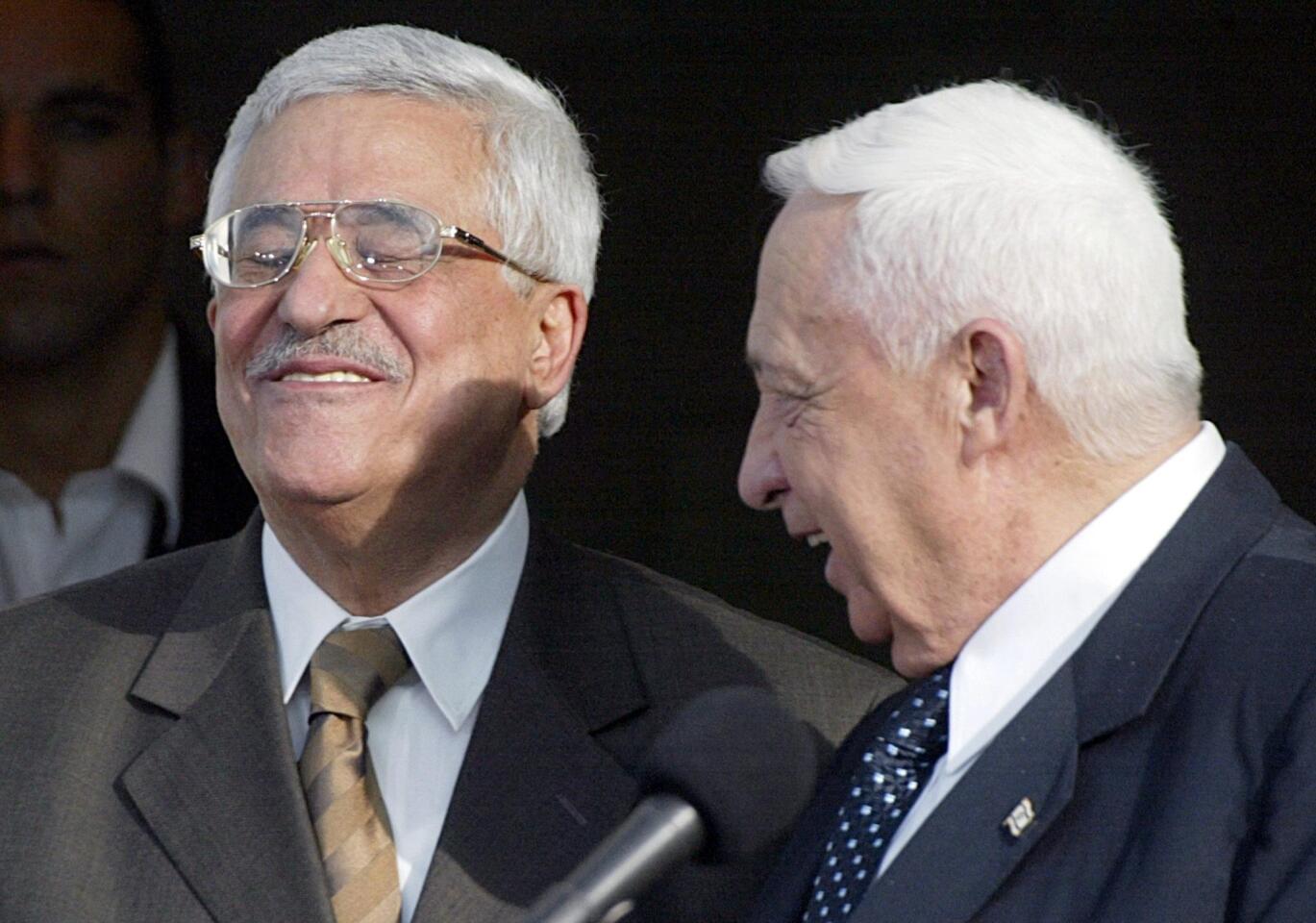
Israeli Prime Minister Ariel Sharon and then-Palestinian Authority Prime Minister Mahmoud Abbas talk in Jerusalem before a meeting in July 2003. Sharon was criticized both within Israel and in Washington for failing to do more to reach out to Abbas, who succeeded Yasser Arafat as president of the Palestinian Authority. (Enric Marti / Associated Press)
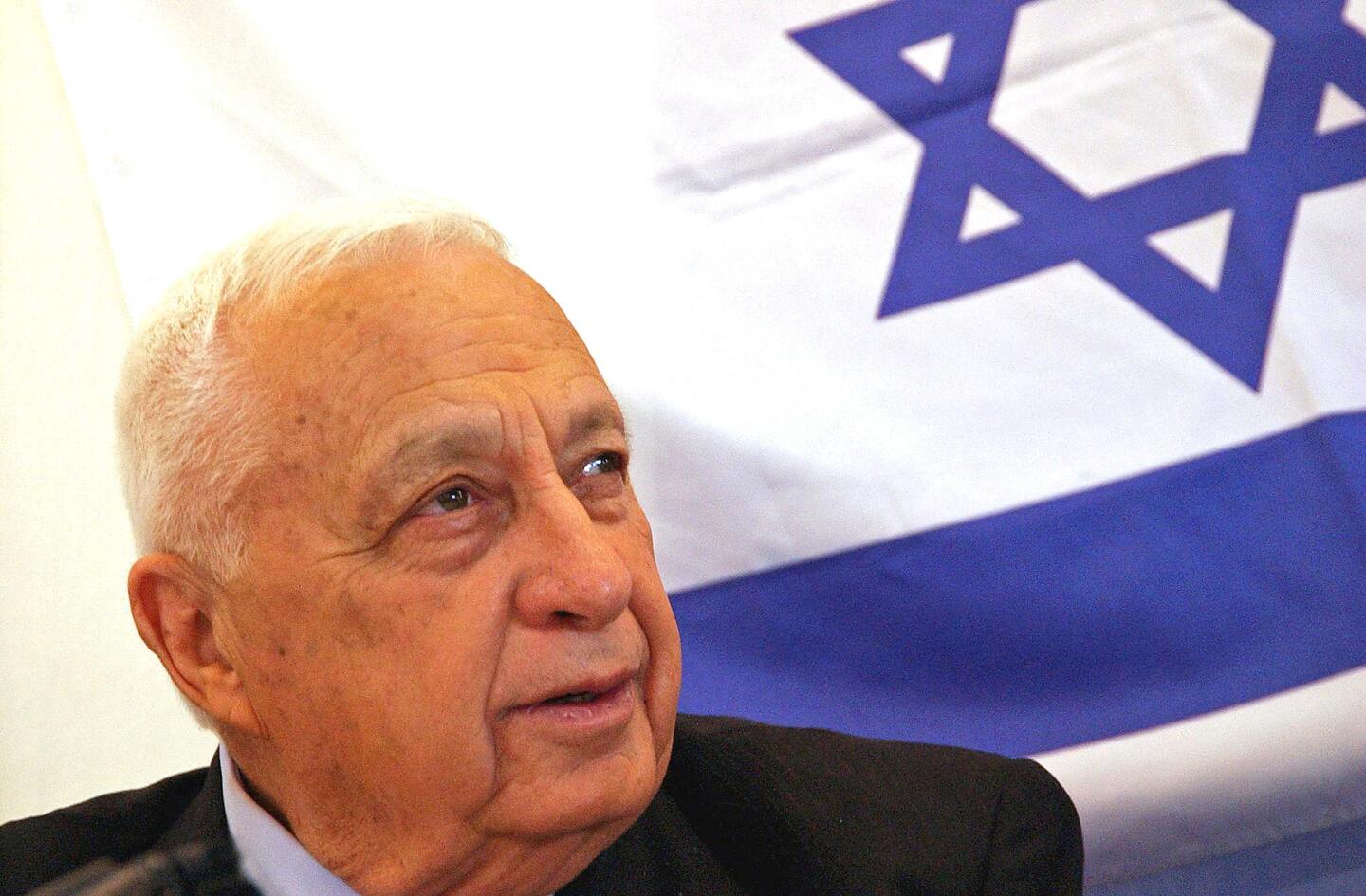
Prime Minister Ariel Sharon poses while welcoming new immigrant soldiers to a Sukkot celebration at his residence in Jerusalem in October 2003. (Debbie Hill / AFP/Getty Images)
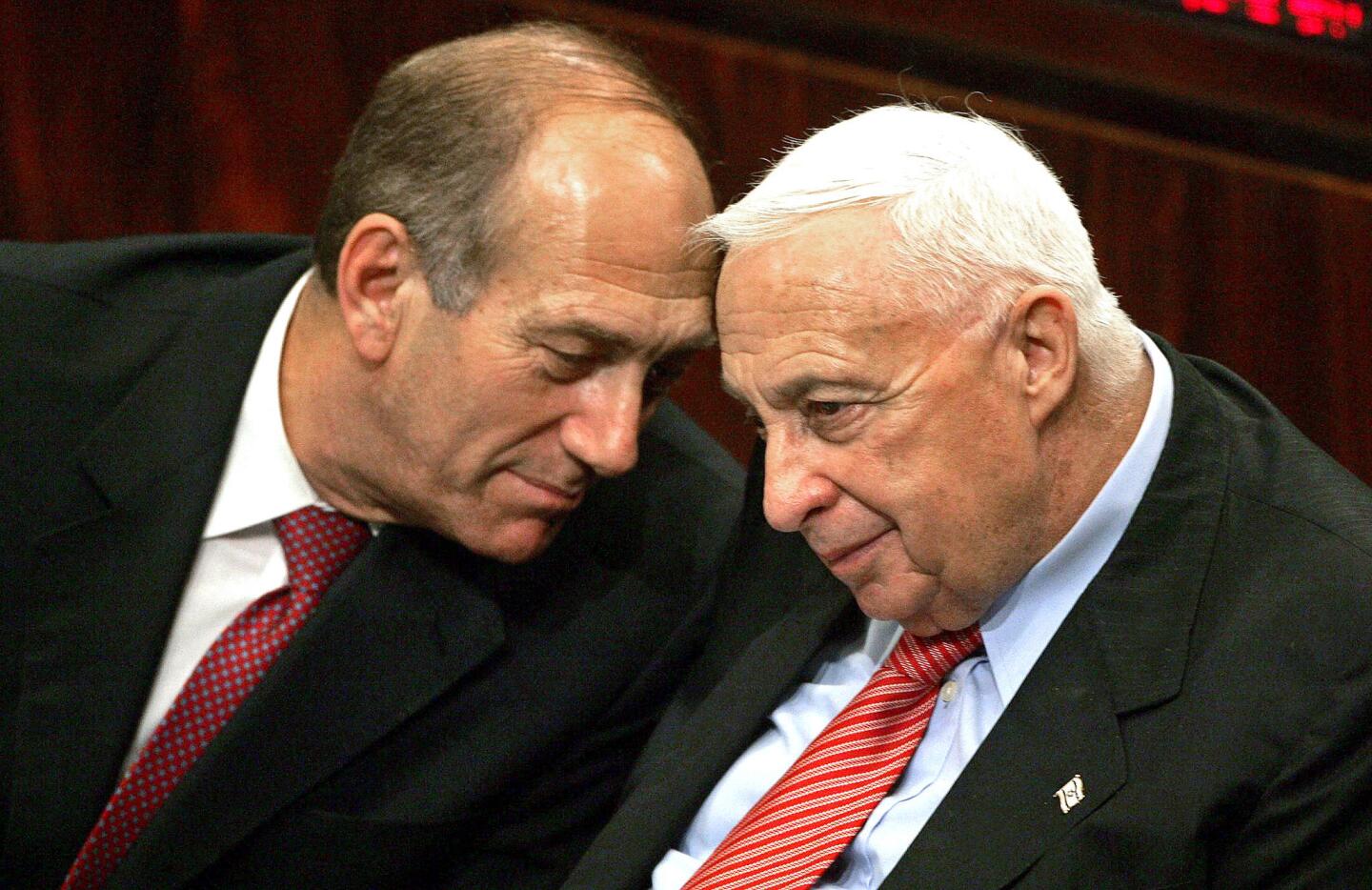
Prime Minister Sharon confers with his deputy, Ehud Olmert, during the opening of the parliament’s winter session in Jerusalem in October 2004. Sharon was preparing for a vote on his controversial Gaza Strip pullout plan. (Menahem Kahana / AFP/Getty Images)
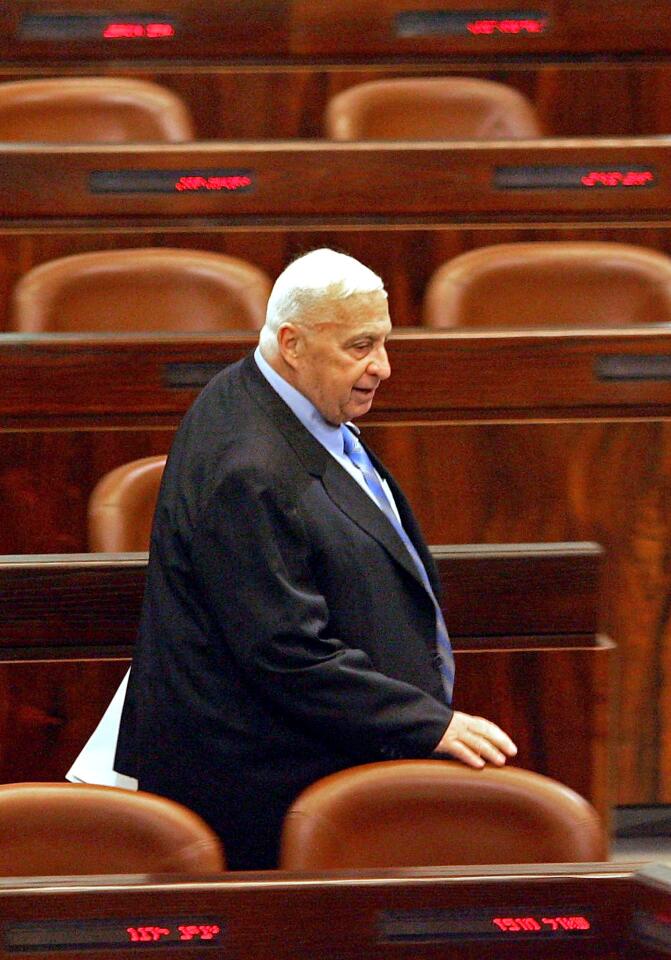
Sharon passes behind empty chairs to be the first to take his seat for the opening of the parliament’s winter session in October 2005. His leadership was under fire from right-wing rebels in his ruling Likud Party angry over the Gaza pullout. Sharon would eventually abandon Likud for a newly formed centrist party, Kadima. (David Silverman / Getty Images)
Advertisement
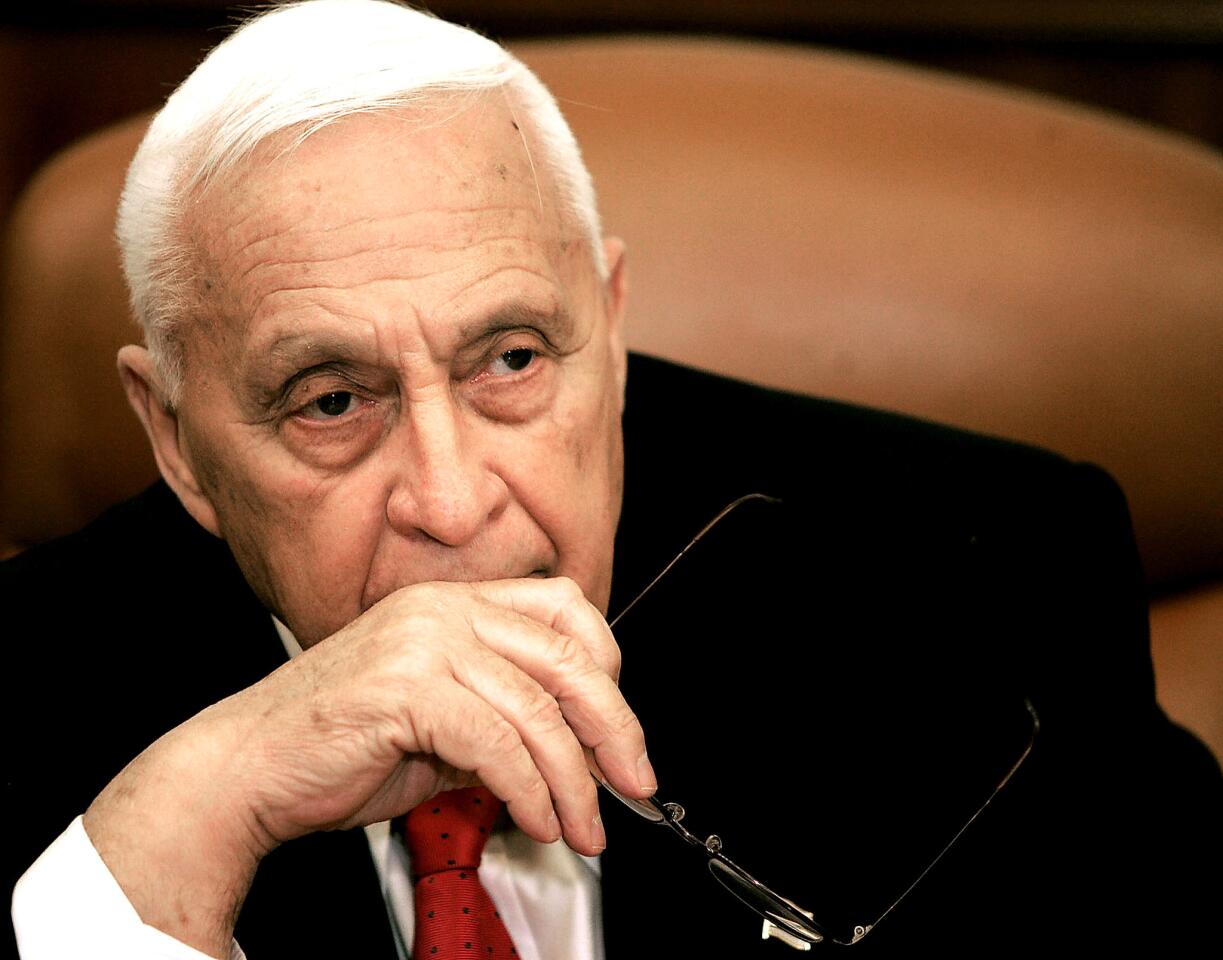
Israeli Prime Minister Ariel Sharon in his office on Jan. 4, 2006, shortly before he was felled by a massive stroke, which sent him into a coma from which he never emerged. (Eliana Aponte / Getty Images)



